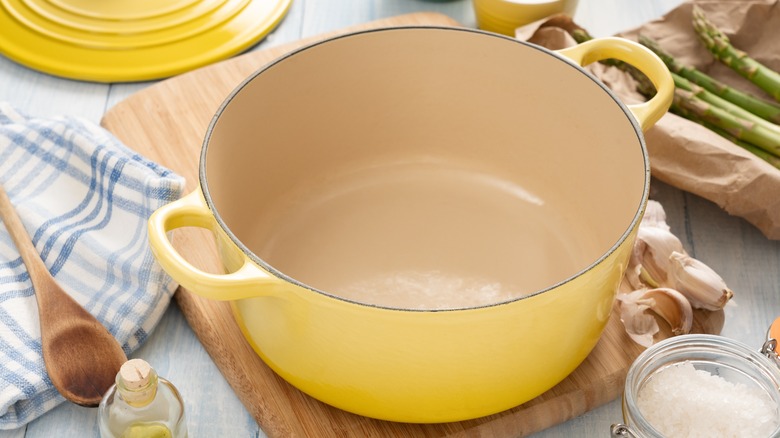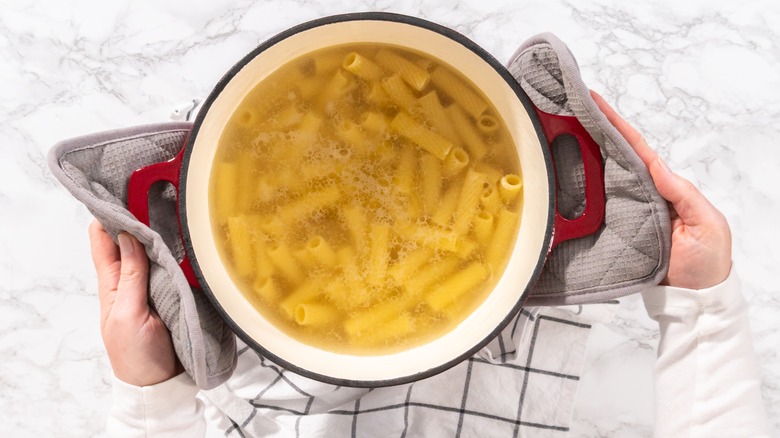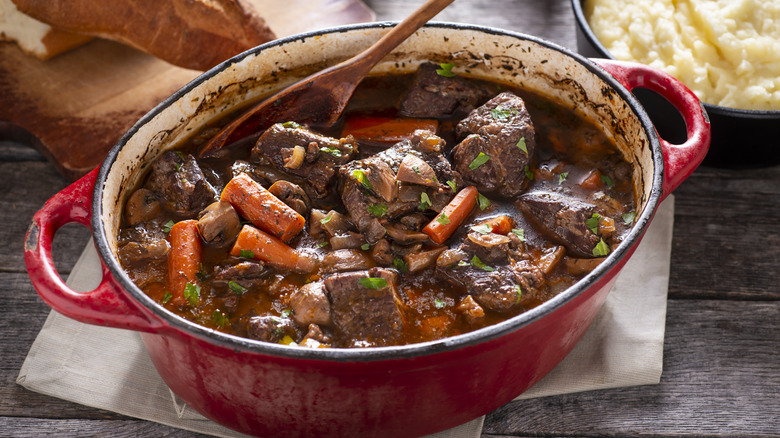The Dutch Oven Temperature Mistake To Avoid At All Costs
The Dutch oven is a centuries-old invention that is beloved and even coveted in many a household. Made of cast iron and often coated with enamel, these heavy pots with tight fitting lids help pros and beginners in the kitchen make some of the juiciest and most succulent dishes. However, if you are subjecting this cookware to excessively high temperatures when you fire up your stovetop burners, you may be setting yourself up for culinary failure with your ingredients burning and sticking to the pot.
The weight of a Dutch oven is one of its hallmarks, allowing it to maintain a consistent temperature and giving some of your favorite dishes, like Sunday pot roast, an even cook. But not all cast iron cookware can withstand the same temperature. Seasoned cast iron can withstand heat that reaches up to 700 degrees Fahrenheit; however, if it is enameled cast iron, that maximum temperature takes a dip down to 400-450 degrees Fahrenheit. But regardless of max temperatures, Dutch ovens are not about a fast cook at a high temperature; this pot is all about slow-and-low cooking.
Always preheat with a liquid or fat
Yet sometimes, hunger or a time crunch can get the best of us. When you want those braised short ribs, you want them as soon as possible. But because Dutch ovens don't conduct heat very well, they require a little patience to warm up. While placing your pot on a burner and firing it up to its highest temperature may seem like a way to circumvent this virtue for immediate gratification, in the long run, you are doing more harm than good. Ultimately, you aren't protecting this expensive piece of cookware from long-term effects that include possibly scorching the finish.
You also want to avoid placing your Dutch oven on a burner without any liquid in it, whether that is water, broth, or an oil of some kind. If you do, this can contribute to the enamel cracking, which will make your cookware sticky. Additionally, you should add a little more fat than you think you need — this is particularly true if you plan to fry something. This precautionary step will not only ensure the integrity of your Dutch oven but that your food doesn't stick.
Avoid extremes
A Dutch oven is all about slow and steady. Any type of quick temperature change could potentially harm it. For this reason, you do not want to put hot water in a cold Dutch oven. This could cause the enamel to crack due to the rapid extreme temperature change. This also means that once you've heated your cookware to your desired temperature, you want to give it adequate time to cool down before setting it on the table to serve up a meal or putting it in the fridge to preserve it.
If you need to put your Dutch oven inside the oven, do not preheat your oven. Instead, allow the Dutch oven and your oven to heat up together. Then, when you are ready to add that bird for your crispy roast chicken to it, it will be ready to go. Take care of your Dutch oven, and it will take care of the meals you want to prepare in it.


